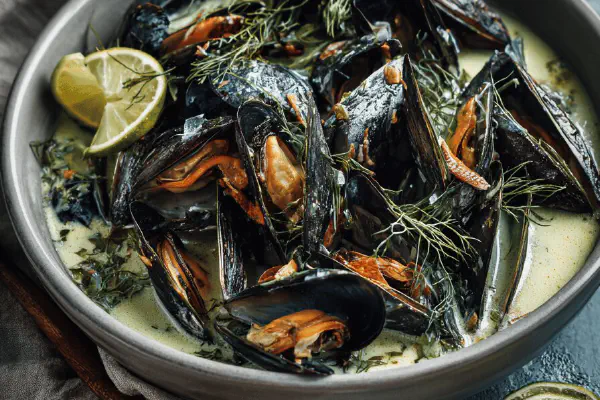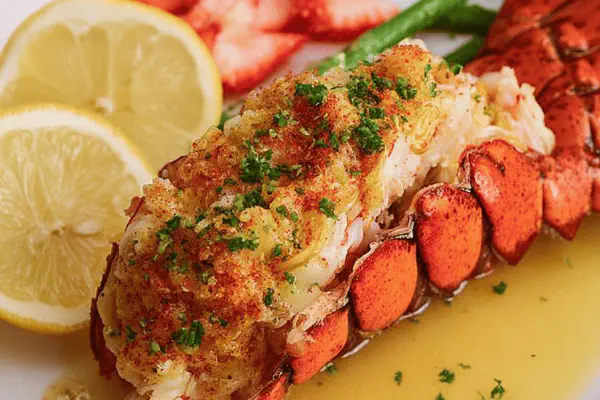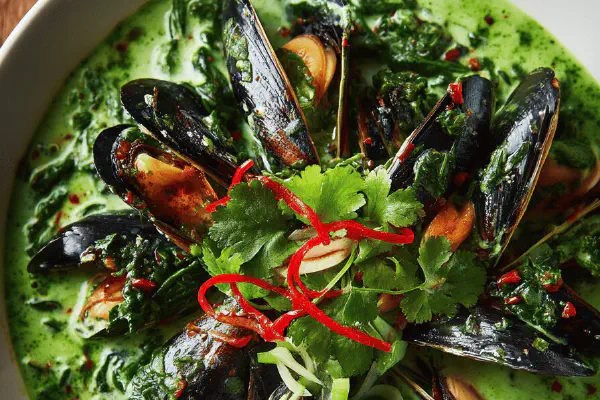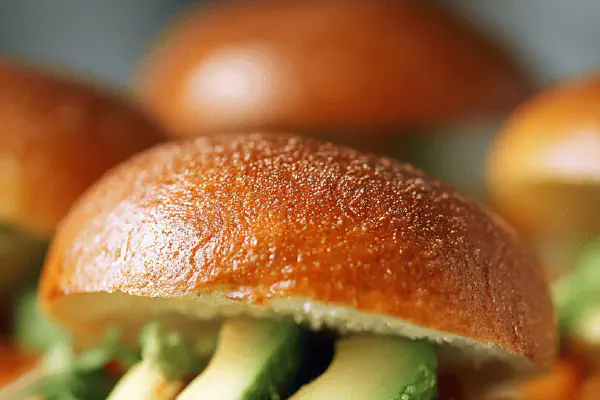Hot Butter Snow Crab
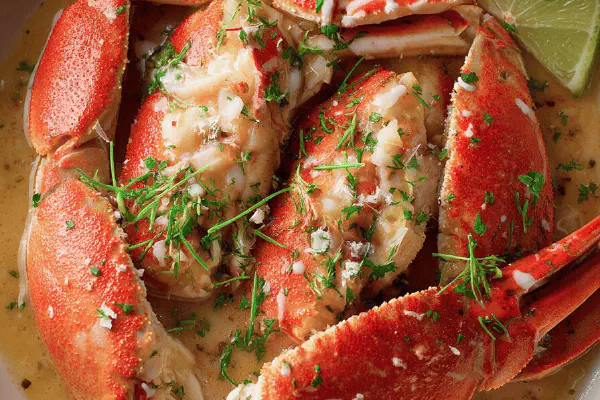
By Emma
Certified Culinary Professional
Ingredients
- 1 French shallot finely chopped
- 240 g (1 cup) unsalted butter
- 480 ml (2 cups) seafood stock
- 30 ml (2 tbsp) freshly squeezed lime juice
- 6 ml (1 1/4 tsp) mild honey
- 4 kg (9 lb) cooked snow crab legs and claws
About the ingredients
Method
- Start by gently softening the shallot in a deep pan over low heat with 60 g (1/4 cup) butter. No browning, just sweat until soft and fragrant. The quiet sizzle should always whisper signal, not shout.
- Add the seafood stock, the lime juice, and honey. Bring the broth to a rolling boil. Quick bubbles, sharp citrus scent. Boil exactly two minutes — enough to meld honey brightness without caramelizing it.
- Turn to low, add rest of the butter 180 g (3/4 cup) in chunks one by one. Stir gently; watch for the thick, velvety swirl as fat melts. Avoid boiling here or butter separates. Best texture comes slow, coaxing emulsification.
- Dump in crab legs and claws. Lower heat to barely a simmer. Patience now. Crab needs just warming through not simmered to chewy. When shells steam hot and sauce clings—not runs—it's ready. Usually 14-16 minutes but trust the feel: shells give off scent, sauce thickens visibly.
- Serve direct from pot or big platter. Crustacean glistens in glowing butter broth pooled at bottom. Pair with herb-butter dip, a dollop of smoky sour cream with Espelette pepper, or a punchy lime-roquette mayo if you want a contrast.
- If butter splits, rescue with a teaspoon cold water whisked in slowly. No stock left? Use clam juice or diluted fish sauce—low and slow to not overpower. Crab shells cracking easy? Warm first, never cold from fridge.
- Leftovers reheat best in covered pan on gentle heat to keep butter rich. Avoid microwave—it toughens crab and separates sauce fast.
- Switch butter for vegan margarine if needed; use vegetable stock instead of seafood broth for a plant variation, but expect flavor drop.
- Use lime, not lemon, for sharper bite that cuts through richness better. Honey amount tame, but can adjust upwards to balance acidity if crab is wild and briny.
Cooking tips
Chef's notes
- 💡 Start slow with shallots—low heat only to sweat out sweetness. No brown edges allowed or bitter burns sneak in. Butter quantity matters; split sauce ruins texture easily when rushed or too hot. Patience wins here; watch for barely bubbling broth not rolling boil. Bright lime juice cuts through fat but acid level tweaks by crab flavor intensity. Honey measured small but enough for subtle balance; too long boiling caramelizes and harshens aroma. When adding butter chunks, cold helps emulsify smoothly; dump all at once messes sauce. Crab needs warming not cooking; shells steaming hot means done, not dry or tough. Heat drop crucial after boil.
- 💡 Use seafood stock for deeper flavor; clam juice or diluted fish sauce work as last resort but careful—easy overwhelm. Vegan option swaps butter for margarine, seafood broth for vegetable stock but flavor dulls noticeably. Keep extra butter on hand; crab size varies, absorbs more sometimes. If sauce splits, rescue fast: small cold water drops whisked in gently bring back gloss and texture. Reheat leftovers slow and covered; microwave kills sauce smoothness and toughens meat. Quit stirring hard after butter melts; swirl fat gently to coax emulsification, no boiling.
- 💡 Crab legs thaw first if frozen—never start cold to avoid rubbery texture. Shell cracking easier warm; have a tool ready for table. Serve directly from pot or platter; butter pools at bottom with shiny crab make better impression than drained plated shells. Optional dips add contrast but skip if distracting the buttery richness. Scent changes from sizzle to steady simmer aroma cue doneness. Watch sauce cling to shells, not drip off; thickened coat means ready. Use lime not lemon for sharper edges and no muddle in flavor; lemon too soft for buttery broth here.
- 💡 Heat control is fragile; too high burns butter causing bitter off taste. Slow lowering heat after initial boil holds sauce integrity and aroma. Stirring after doneness dries crab and toughens meat; gentle motion only. Leftovers best reheated slow on stove covered to prevent sauce break. Fish sauce or clam juice swaps for broth need low slow temp to avoid overpowering crab. Honey brightness mutes if overcooked; timing critical at two minutes boil max. Sharp citrus scent signals honey melding. Butter amount increased marginally from originals for silky broth that resists separation. Shell aroma and sauce viscosity real timers, not clock.
- 💡 Watch for sauce split signs; watery bubbles on sides or fat floating signals temperature or mixing issues. Fix quickly with cold water whisked in small quantities. Egg yolk or emulsifiers not suggested here; pure butter technique preferred. Crab shelled and cooked well before warming; raw or frozen too long ruins texture. Butter melting in stages teaches viscosity control—chunks melt slower bringing thick velvety swirl. Resist microwaving leftovers; breaks emulsions fast, crab meat toughens. Patience at each phase converts flavor, texture, and aroma cues into final result. Keep extra butter ready; crab amount and size sometimes require boosts.
Common questions
Can I use lemon instead of lime?
Lemon softer, muddles butter richness. Lime sharper bite cuts fat better. If lemon only, adjust honey or add less juice or flavor dulls. Lime’s zest more distinct for buttery crab.
What if butter splits during cooking?
Add teaspoon cold water slow while whisking gently. Stops separation, brings back creamy look. Avoid boiling when adding butter chunks. Cold butter chunks help emulsify; all at once breaks it.
How long to warm crab legs without drying?
Keep barely simmering, shells steaming hot but no rolling boil. Usually 14-16 minutes. Too long or heat too high toughens meat. Aroma thickens, sauce clings—real signals not strict times.
How to store and reheat leftovers?
Covered pan on gentle heat best to keep sauce glistening; microwave breaks sauce and toughens crab meat fast. Can use airtight container fridge for day or two but reheat slowly always.
